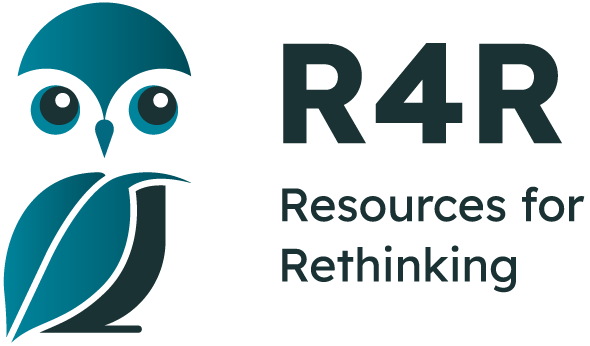- Home
- Tutorial
- Resource Guides
- Focus Areas
- LSF Programs
-
Professional
Development - Review Process
-
A project of LSF

Search for Resources
Description
Teaching with i-Tree is an interactive and hands-on resource that allows the students to learn about the ecosystem services that trees provide. With this resource they will learn the value of trees and how to identify them, how to measure them and assess their health, how to interpret and analyze findings, and how to use the i-Tree tools to develop plans to increase the benefits of trees in a community.
The first of three activities begins with a discussion of the products trees provide, their environmental benefits and the dollar value of those benefits. Students then learn to identify different types of trees by examining twigs and using an app. Finally, the students move outdoors and compete to identify 10 selected trees.
In the second activity students learn to calculate the dollar value and ecosystem services of trees. They visit a selected study area and collect data by identifying, measuring and assessing a group of trees. Back in the classroom the students will use i-Tree Design to calculate the value of their trees. They share their data, create a graph and answer reflection questions (provided). They will then create an “Ecosystem Services Guide” to present to classmates, other classes and community groups. If feasible the students could also develop a service-learning action project to care for and plant additional trees.
In the third activity, students demonstrate what they have learned in a role play as "land managers" during which they develop a plan to increase the number of trees on the school grounds. They will use the i-Tree online tools to help in this process before presenting their plan.
General Assessment
What skills does this resource explicitly teach?
This resource teaches the students how to identify and measure trees and to analyze the meaning of their findings.
Strengths
- well organized and structured
- a good quantity of information for the teacher
- additional extension activities included
- hands-on, interactive and engaging
- all materials are included and visually appealing
Weaknesses
- lack of suggestions for those learners who may have difficulties with the material
- assessment suggestions are provided but there are no tools such as rubrics or checklists.
Recommendation of how and where to use it
The resource is best suited for the middle school Science classroom. It would be beneficial to use when discussing habitats, climate change and human impacts of the environment. As it is a lengthy resource, it could be used as a introductory activity to coincide with National Tree Day in September or Arbor Day in May.
Another consideration when using this resource is that the trees will need to have leaves in order to assist with their identification.
Relevant Curriculum Units
The following tool will allow you to explore the relevant curriculum matches for this resource. To start, select a province listed below.
- Step 1Select a province
- Alberta
- Step 2Select a grade level
- Grade 6
- Step 3Select a subject
- Science
- Step 4Relevant matches
- Living Systems: Understandings of the living world, Earth, and space are deepened through investigating natural systems and their interactions
- Grade 7
- Step 3Select a subject
- Science
- Step 4Relevant matches
- Interactions and Ecosystems
- Plants for Food and Fibre
- Grade 9
- Step 3Select a subject
- Science
- Step 4Relevant matches
- Biological Diversity
- Manitoba
- New Brunswick
- Step 2Select a grade level
- Grade 6
- Step 3Select a subject
- Science
- Step 4Relevant matches
- Science 6 Wayfinding: Making sense of your world: Scientific Literacy
- Wayfinding: Making sense of your world: Learning and Living Sustainably
- Grade 9
- Step 3Select a subject
- Science
- Step 4Relevant matches
- Science 9 Ecosystem Dynamics: Learning and Living Sustainably
- Science 9 Ecosystem Dynamics: Scientific Literacy
- Nova Scotia
- Nunavut
- Step 2Select a grade level
- Grade 7
- Step 3Select a subject
- Science
- Step 4Relevant matches
- Interactions and Ecosystems
- Plants for Food and Fibre
- Grade 8
- Step 3Select a subject
- Science
- Step 4Relevant matches
- Interactions in Our Environment
- Grade 9
- Step 3Select a subject
- Science
- Step 4Relevant matches
- Biological Diversity
- Ontario
- Step 2Select a grade level
- Grade 6
- Step 3Select a subject
- Science & Technology
- Step 4Relevant matches
- Life Systems: Biodiversity
- Grade 7
- Step 3Select a subject
- Science & Technology
- Step 4Relevant matches
- Life Systems: Interactions in the Environment
- Grade 9
- Step 3Select a subject
- Science
- Step 4Relevant matches
- :Biology: Sustainable Ecosystems
- Prince Edward Island
- Quebec
- Step 2Select a grade level
- Grade 6
- Step 3Select a subject
- Science & Technology
- Step 4Relevant matches
- Living Things
- Grade 7
- Step 3Select a subject
- Science & Technology
- Step 4Relevant matches
- The Living World
- Grade 8
- Step 3Select a subject
- Science & Technology
- Step 4Relevant matches
- The Living World
- Grade 9
- Step 3Select a subject
- Science & Technology
- Step 4Relevant matches
- Applied Science & Technology: The Living World
- Science and Technology: The Living World
- Saskatchewan
Themes Addressed
Air, Atmosphere & Climate (1)
- Climate Change
Citizenship (1)
- General Guide to Taking Action
Ecosystems (2)
- Appreciating the Natural World
- Habitat Loss
Land Use & Natural Resources (3)
- Forests
- Planting Native Species
- Sustainable Urbanization
Sustainability Education Principles
| Principle | Rating | Explanation |
|---|---|---|
| Consideration of Alternative Perspectives | Very Good | The students learn how to identify trees and explore the ecosystem benefits they provide. There is no bias towards any one point of view as the resource's goal is for to expand the students' understanding and knowledge. |
Consideration of Alternative Perspectives:
| ||
| Multiple Dimensions of Problems & Solutions | Very Good | The resource provides opportunities for the students to gain an understanding of the environmental, economic, and social values of trees in a community while also allowing the students to be proactive in their care. |
| Multiple Dimensions of Problems & Solutions: Effectively addresses the environmental, economic and social dimensions of the issue(s) being explored.
| ||
| Respects Complexity | Good | The online tool allows the students to gain a deeper understanding of the benefits of trees in a community while also allowing the students to explore a plan to improve the health of the trees and manage the area. |
| Respects Complexity: The complexity of the problems/issues being discussed is respected. | ||
| Acting on Learning | Very Good | If feasible, the students will create a service-learning action project to manage and improve the selected tree area. This could involve the planting of trees, caring for damaged trees, and removing invasive species. |
| Acting on Learning: Learning moves from understanding issues to working towards positive change — in personal lifestyle, in school, in the community, or for the planet
| ||
| Values Education | Very Good | Throughout the resource there are ample opportunities for the students to express their thoughts and ideas with the discussion questions and presentations. |
| Values Education: Students are explicitly provided with opportunities to identify, clarify and express their own beliefs/values. | ||
| Empathy & Respect for Humans | Poor/Not considered | This is not a focus of this resource. |
| Empathy & Respect for Humans: Empathy and respect are fostered for diverse groups of humans (including different genders, ethnic groups, sexual preferences, etc.). | ||
| Personal Affinity with Earth | Very Good | This is a strength of the resource with its outdoor activities and service-learning action project. |
| Personal Affinity with Earth: Encourages a personal affinity with -the natural world.
| ||
| Locally-Focused Learning | Very Good | This is also a strength of this resource as the area of focus for the activities are in the school community. |
| Locally-Focused Learning: Includes learning experiences that take advantage of issues/elements within the local community.
| ||
| Past, Present & Future | Good | The resource certainly provides a solid sense of the present and a positive vision for the future. The teacher will have to develop an understanding of the past during the presentation of materials and activities and in the discussions. |
| Past, Present & Future: Promotes an understanding of the past, a sense of the present, and a positive vision for the future. | ||
Pedagogical Approaches
| Principle | Rating | Explanation |
|---|---|---|
| Open-Ended Instruction | Very Good | The resource has a focus of learning about trees, collecting data and using an online tool to calculate the benefits of the trees in an area. |
| Open-Ended Instruction
: Lessons are structured so that multiple/complex answers are possible; students are not steered toward one 'right' answer. | ||
| Integrated Learning | Good |
|
| Integrated Learning: Learning brings together content and skills from more than one subject area
| ||
| Inquiry Learning | Good | The students work to learn the ecosystem services provided by trees and use an online tool to calculate these services. Additionally, the students create a plan to manage a treed area. |
| Inquiry Learning: Learning is directed by questions, problems, or challenges that students work to address.
| ||
| Differentiated Instruction | Good | This is a very interesting and engaging resource with activities that will suit a wide range of learning styles. There are no suggestions for strategies for students who may experience difficulties with the material. |
| Differentiated Instruction: Activities address a range of student learning styles, abilities and readiness.
| ||
| Experiential Learning | Very Good | This resource provides the students with authentic activities and experiences that occur outside in the natural environment. Additionally, in the role play activity the students "experience what's involved in the management of an area. |
| Experiential Learning: Authentic learning experiences are provided
| ||
| Cooperative Learning | Satisfactory | |
| Cooperative Learning: Group and cooperative learning strategies are a priority.
| ||
| Assessment & Evaluation | Good | Each section of the guide provides the teacher with assessment suggestions; however, there are no tools provided for teacher use. |
| Assessment & Evaluation: Tools are provided that help students and teachers to capture formative and summative information about students' learning and performance. These tools may include reflection questions, checklists, rubrics, etc. | ||
| Peer Teaching | Satisfactory | |
| Peer Teaching: Provides opportunities for students to actively present their knowledge and skills to peers and/or act as teachers and mentors.
| ||
| Case Studies | Poor/Not considered | The resource is not structured for this type of learning. |
| Case Studies: Relevant case studies are included. Case studies are thorough descriptions of real events from real situations that students use to explore concepts in an authentic context. | ||
| Locus of Control | Satisfactory | The students have some element of choice in the activities in terms of their presentations and plans but the resource is set in terms of its focus and specific activities. |
| Locus of Control: Meaningful opportunities are provided for students to choose elements of program content, the medium in which they wish to work, and/or to go deeper into a chosen issue. | ||

